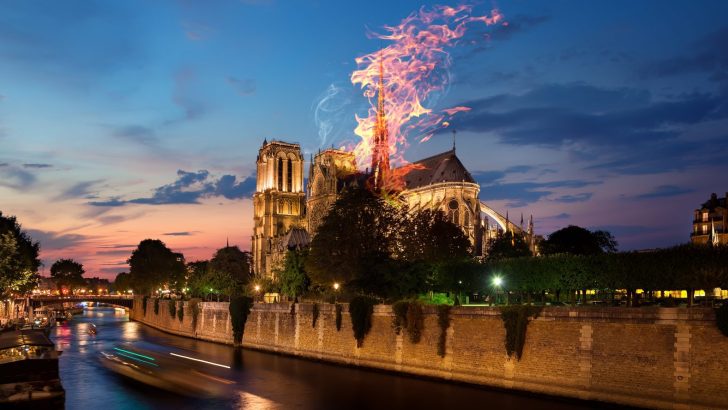Just before Christmas the international press carried worrying stories about the renovation and future use of Notre Dame de Paris, one of the most important and pre-eminent churches, not just in Europe, but in the world.
Middle Ages
It has had, since the Middle Ages, a special place also too in the life and imagination, in the very spirit of Paris itself, something of which was realised by Victor Hugo in his celebrated novel of 1831 Notre dame de Paris (known in English as The Hunchback of Notre Dame). In the two chapters of Book III he provides a very effective survey of the Middle Ages, and an overview of what could be seen in the 1400s of the city from the roof of the church, in all its social variety.
This led in the following decade into a renovation of the cathedral overseen by Eugène Viollet-le-Duc, a French architect and historian, who undertook the work in the same inspired and inspiring manner as his other great projects, such as the restoration of Carcassonne, the medieval city in the south of France.
Hence the rumours that have been circulating which hint at a crass scheme for tourists which some critics have called the ‘Disneyfication’ of the cathedral”
What we enjoyed of Notre Dame until the disastrous fire in 2019 was the result of his interventions — distinctively the wooden spire that flamed up with such horror on that night. But Le Duc was unique. These days there are few such people around. Our age seems beset with the triumph of the mediocre.
Hence the rumours that have been circulating which hint at a crass scheme for tourists which some critics have called the ‘Disneyfication’ of the cathedral. Others say that the basic thought behind the display of will be a presentation of the church, the Middle Ages and the Christian faith as ‘medieval life for dummies’.
As of now the full scheme has not been revealed in all its horror. But many people for whom the cathedral means a great deal are very anxious.
History of art
We all know what is involved. Graduate students of the history of art, will take the place of priests, and they will deactivate the place and its art through over-simplification.
A few years ago my wife and I were in Venice for the first time. This was the fulfilment of a long desired visit, prompted by an early reading of Ruskin’s Stones of Venice. But in reality the visit was a disaster. The city and the cathedral were not what had been so long hoped for. Venice has come close to being ruined by mass tourism.
Do not think that Ireland has avoided this kind of thing. We have, for instance, been endangering the Book of Kells, something that causes much anxiety to both the State and Trinity College, who yet desire to maintain the revenue stream that flows from the million odd visitors annually.
I have stood listening to the comments of some of these visitors who are there largely because it is the place to go in the day before visiting Temple Bar in the evening. Many cannot come to terms with what the book is. The inter-cultural confusions of tourism are often odd.
I still recall decades ago on a visit to Paris my wife and I while attending Mass in Notre Dame were photographed by a party of Japanese tourists. I suggested to my wife that in the autumn a slide of us would perhaps be shown in Osaka, captioned ‘European natives at their traditional religious rites’. But this would only be a just return for all those similar pictures made of other sorts of ‘natives’ by European explorers, colonists and of course tourists.
But perhaps I fear too much. Perhaps common sense will be restored, and the spell of Walt Disney warded off. The real purpose of Notre Dame as a place to channel the divine, however we experience it, will be restored: it is not a place of entertainment, but of revelation.
Goodwill
Let those who still pray, pray this may be so, supporting the hopes of all men of goodwill.
The intermingling of tourism, state finances, and the contrasting aims and hopes of religion are an important theme, to which I will return again.


 Peter Costello
Peter Costello